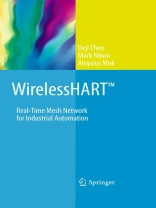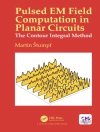The process control industry has seen generations of technology advancement, from pneumatic communication to electrical communication to electronic c- munication, from centralized control to distributed control. At the center of today’s distributed control systems are operator workstations. These operator wo- stations provide the connection between those overseeing and running plant operations to the process itself. With each new generation of products the operator workstation has become increasingly more intelligent. Newer applications provide advanced alarming, control, and diagnostics. Behind all of these applications are smarter devices. These smart devices provide greater process insight, reduce en- neering costs, and contribute to improving the overall operational performance of the plant. Smart devices include advanced diagnostics that can report the health of the device and in many cases, the health of the process that the device is connected to. It is not uncommon for smart devices to include diagnostics that can detect plugged lines, burner flame instability, agitator loss, wet gas, orifice wear, leaks, and cavitations. These devices tell the user how well they are operating and when they need maintenance. Improvements in sensor technology and diagnostics have lead to a large variety of smart devices. So how do users connect the capabilities of these smart devices to their existing control system infrastructures? The answer is wireless. Wireless technology has matured to the point that it now can be safely applied in industrial control, monitor, and asset management applications.
Daftar Isi
Wireless HART in a Nutshell.- Overview.- Physical Layer.- Data Link Layer.- Network Layer and Transport Layer.- Application Layer.- Wireless HART Network.- Wireless HART in Depth.- An Example.- Discourses on the Stack.- Discourses on the Mesh Network.- Discourses in General.- Wireless HART in Practice.- Test and Diagnostic Tools.- A Fast Approach to Equip a HART Device with Wireless HART Capability.- Development Recommendations.- Deployment Recommendations.- Wireless HART in the Bigger Picture.- Why Wireless HART.- Wireless and Real-Time Industrial Process Control.- Research in Real-Time Wireless Mesh Networks.- Future of Wireless and the Wireless HART Standard.- Appendices.- Attribute and Field Values.- Symbols and Abbreviations.- Definitions.- References.












